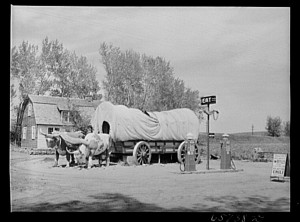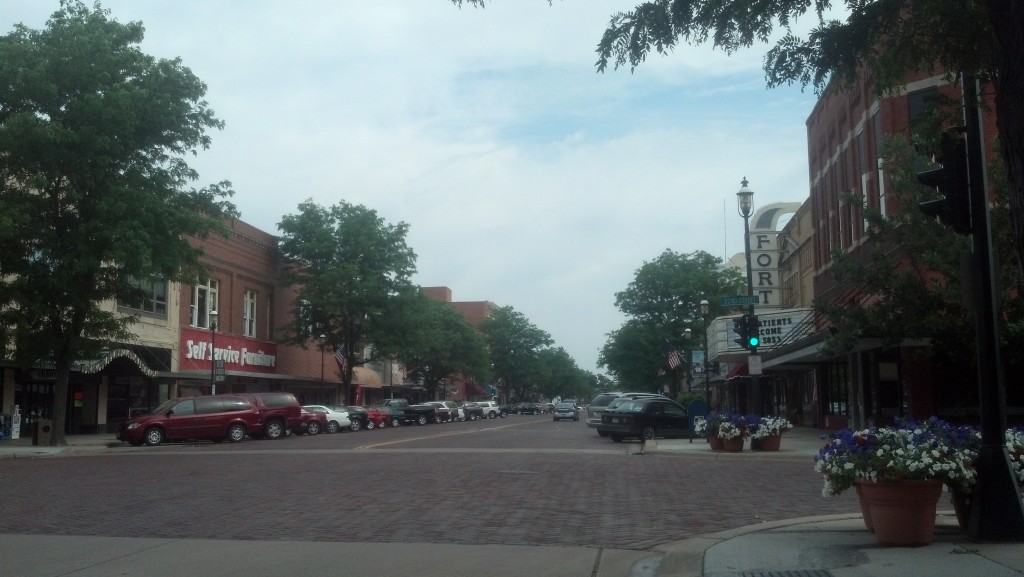KEARNEY, Neb. — When the Lincoln Highway was routed through this city near the southern bend of the Platte River, a local farmer put up a sign trumpeting the fact that Kearney was 1,733 miles to Boston and 1,733 miles to “Frisco.” While the Lincoln Highway doesn’t go to Boston, that didn’t matter: Kearney was the “Midway City.”
It’s in the middle of somewhere, for sure. The U.S. Army established a rudimentary fort here in 1848 to help protect westward settlers passing through the Platte River valley. Fort Kearny (note the difference in spelling, the result of an error on an official application) was ideally situated because various trails from the east converged here to follow the Platte westward. The future transcontinental railroad would come through town, too.
Driving along Central Avenue, the broad brick-lined main commercial street, it’s hard to not to get the feeling that back in the day, Kearney had big dreams of being a major metropolis. The streets are wide — almost too wide — and the grid is quite extensive compared to most Platte River Valley towns along the Union Pacific Railroad and Lincoln Highway. Overall, there’s a slight emptiness to the city’s expansive scale.
In its first few decades, Kearney quickly grew into a boom town.

The center of Kearney, Neb., as seen in 1909. (Photo by F.J. Bandholtz/Library of Congress >>)
“A Minneapolis of the West,” said Col.W.W. Patterson, Kearney’s chief promoter. The prairie town mushroomed into a metropolis almost overnight. By 1890 Kearney had the first all-electric street railway system in Nebraska and the first west of the Mississippi River (except St.Louis), plus electricity for its homes, streets, churches, and industry. Impressive business and public buildings were built, including a five-story opera house and a city hall with clock tower.
But the Panic of 1893 hit Kearney hard, along with all of Nebraska. “[W]hole townships in the western part were deserted so that one could ride all day finding nothing but empty houses and fields growing up to weeds,” according to “History and Stories of Nebraska,” written by Addison Erwin Sheldon in 1919.
In 1890, Kearney had a population of 12,000 people. By 1910, there were 6,202 people.
According to “American Road” by Pete Davies, the farmer who put up the 1,733 sign, H.D. Watson, had set up a tourist stop along the Lincoln Highway in the 1920s. In the end, Watson went belly up financially.
***

In 1942, John Vachon photographed this roadside tourist attraction off U.S. 30 in Kearney, Neb. (Photo by the U.S. Farm Security Administration via Library of Congress >>)
It’s here in central Nebraska where the Lincoln Highway’s route, along U.S. 30, is closely paralleled by Interstate 80. Most long-haul travelers are bypassing Kearney these days. If they’re stopping off, visitors are often sequestered to the strip of motels, gas stations and fast-food restaurants along Second Avenue, which connects the center of Kearney with I-80.
There’s not as much pass-through traffic on the Lincoln Highway these days, so the gravity of Kearney has shifted to the corridor leading to and from the modern interstate. On I-80 itself east of town, there’s the Great Platte River Road Archway, a major landmark spanning the highway that serves and educates modern-day crosscountry travelers.
Kearney — pronounced “car knee” — will soon host the Lincoln Highway’s centennial celebration. Two-hundred seventy people in 140 vehicles will meet in Kearney as part of the 100th Anniversary Tour, complete with a parade of cars downtown.
Like Bucyrus, Ohio, where I stumbled upon a vintage car cruise, Kearney has wide streets. Of the towns I’ve traveled through en route to San Francisco, Kearney seems to be a good composite of many of the towns the Lincoln Highway passes through. Its main street may be called Central Avenue, but it feels like Main Street USA. It’s not too big and not too small. It’s right in the middle.
In that sense, Kearney is perfectly situated roughly in the middle of the continent for the purposes of celebrating the Lincoln Highway.
But the Lincoln Highway, which is not very well marked in Nebraska, is not the only landmark route that passes through Kearney. In the Cornhusker State, Lincoln Highway has competition. There are signs marking the auto routes for the Mormon Pioneer Trail, Oregon National Historic Trail and California National Historic Trail. The Pony Express came through, too, along with the Union Pacific Railroad.
And so now I am, just like thousands of people before me, passing on through.


Mike,
I am Libby’s Mom! She shared your trip with me and I am really enjoying your posts!
Cathy
Thanks for reading!